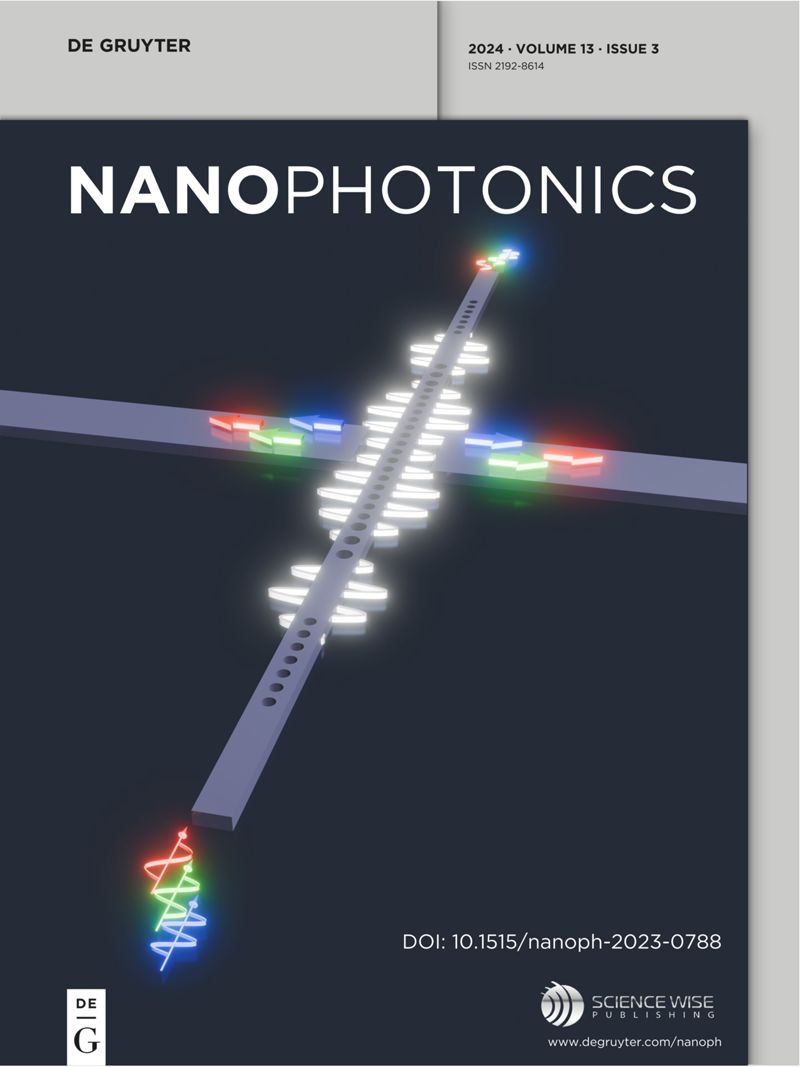基于单一层次超表面的微波、红外和可见光波段仿生多光谱伪装材料
IF 6.5
2区 物理与天体物理
Q1 MATERIALS SCIENCE, MULTIDISCIPLINARY
引用次数: 0
摘要
大自然可以极大地启发人类。变色龙、水母和许多其他生物使用独特的伪装方法。多光谱伪装材料是对抗渐进多光谱探测的理想材料。建议的结构应简单和高度透明,以确保广泛的应用范围。在这项研究中,设计、制造并测试了一种具有可见光透明、微波扩散和红外(IR)伪装的仿生多光谱伪装材料。通过以下步骤在单一超表面上实现多光谱伪装性能:首先,将氧化物和金属组成的纳米级多层膜统一起来,实现低红外发射率和高可见光透过率。然后,设计两个单元获得相位差,从而实现微波扩散性能。基于区域填充率与红外发射率的关系,该单元可以在红外热像仪下进行迷惑成像。通过基于等效电路模型的人工智能算法对结构参数进行了计算和优化。然后,从7 GHz到16 GHz的雷达截面降低了10 dB,获得了困惑的红外热图像,并获得了高的光学透过率(>0.7)。该工作对多光谱伪装材料的设计和制造具有重要的指导意义。本文章由计算机程序翻译,如有差异,请以英文原文为准。
Bio-inspired multispectral camouflage material for microwave, infrared, and visible bands based on single hierarchical metasurface
Nature can significantly inspire humans. Chameleons, jellyfish, and many other creatures use unique camouflage methods. Multispectral camouflage materials are highly desirable to against progressive multispectral detection. The proposed structure should be simple and highly transparent to ensure a wide application range. In this study, a bio-inspired multispectral camouflage material with visible transparency, microwave diffusion, and infrared (IR) camouflage was designed, fabricated, and tested. Multispectral camouflage performance was achieved on a single metasurface by the following steps: First, a nanoscale multilayered film consisting of an oxide and metal was unitized to achieve a low IR emissivity and high visible transmittance. Then, two units were designed to obtain a phase difference, thus realizing the microwave diffusion performance. Based on the relationship between the area filling fraction and IR emissivity, the units can perform puzzled imaging under an IR thermal camera. The structural parameters were calculated and optimized through an equivalent circuit model-based artificial intelligence algorithm. Then, a 10 dB reduction in radar cross section from 7 GHz to 16 GHz, a puzzled IR thermal image, and a high optical transmittance (>0.7) were achieved. The work provides significant guidance for the design and fabrication of multispectral camouflage materials.
求助全文
通过发布文献求助,成功后即可免费获取论文全文。
去求助
来源期刊

Nanophotonics
NANOSCIENCE & NANOTECHNOLOGY-MATERIALS SCIENCE, MULTIDISCIPLINARY
CiteScore
13.50
自引率
6.70%
发文量
358
审稿时长
7 weeks
期刊介绍:
Nanophotonics, published in collaboration with Sciencewise, is a prestigious journal that showcases recent international research results, notable advancements in the field, and innovative applications. It is regarded as one of the leading publications in the realm of nanophotonics and encompasses a range of article types including research articles, selectively invited reviews, letters, and perspectives.
The journal specifically delves into the study of photon interaction with nano-structures, such as carbon nano-tubes, nano metal particles, nano crystals, semiconductor nano dots, photonic crystals, tissue, and DNA. It offers comprehensive coverage of the most up-to-date discoveries, making it an essential resource for physicists, engineers, and material scientists.
 求助内容:
求助内容: 应助结果提醒方式:
应助结果提醒方式:


